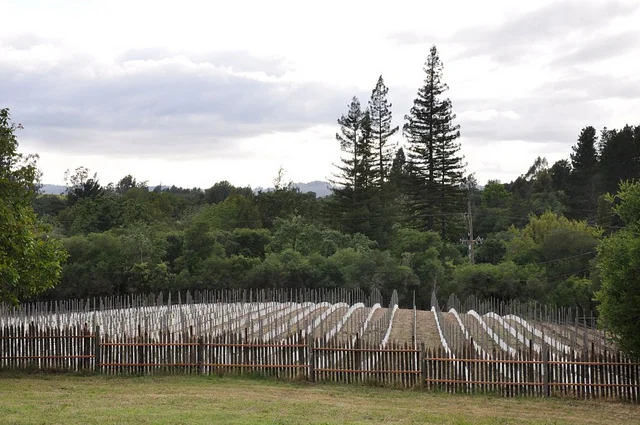I’ve long felt that farming is a continual voyage of understanding and self-improvement. What one learns in school or from the received wisdom of esteemed elders or famous vineyardists or winemakers is valuable, but it is not always relevant to what you will experience on your site. Part of being a farmer is to learn and draw your own conclusions from your own experience. After all, you know your site better than anyone else.
To that end, I’ve come to grips with the fact that one of our early decisions to plant the Calera clone of Pinot Noir might have been the wrong one. While we like the quality of the wine made from our Calera blocks (it has found its way into Kosta Browne’s Russian River Valley blend from the first 2013 harvest), the clone is highly prone to shatter because of the grapes' failure to properly self-pollinate. Yields have been ridiculously low--while our Pommard blocks reliably produce three tons per acre, the best we’ve managed in our Calera blocks is one ton per acre.
So, last year we began to consider changing some portion of our Calera blocks to another clone, which will hopefully perform better on our site. The process was fun and informative.
We began with conceptual discussions with our team, including Jim Pratt, Kris Lowe and our winery partner, Kosta Browne. Each contributed different thoughts and opinions and answers to the question, “Should we change and, if so, to what?” Based on these conversations, we decided that if we were going to make a change, we should consider one of three clones: clone 2A “Wadenswil,” from Switzerland, clone 23, “Mariafeld,” also from Switzerland, and clone 37, “Mount Eden,” a California heritage clone selected from the historic Mount Eden Winery. Then, we retired to the Kosta Browne Winery, where they generously walked us through a tasting of many (more than 10, I think) wines in process, each made from one or another of these clones. Based on this tasting, Celeste and I had a decided preference for clone 23, which had a distinctive rich flavor that we could consistently identify. Coincidentally, it is a also favorite of Kosta Browne.
The next step was to consider how much of our vineyard to switch. Our goal has always been to create a vineyard worthy of a “vineyard designate” wine (i.e., a bottling that consisted solely of our grapes). To achieve this, our grapes must be of the highest quality, but also combine to create a distinctive wine of unique character and interest. In that sense, each clone is like the players in a great band—unique and distinguishable, but harmonious and creating a whole bigger than the sum of the parts. Mariafeld definitely will add to the mix, but too much might overwhelm the Pommard, which we love.
In the end, we decided to graft one block (Naomi’s block, approximately one acre) to Mariafeld. We’ll keep blocks 4 and 5 to Calera for the time being. Jim Pratt and his team are not as frustrated with it as Kris and I, and he has some ideas to improve production in those blocks.
I sourced the budwood from UC Davis over the winter. The grafting was accomplished on April 9, and already I am seeing the newly grafted buds beginning to push. We’ll have our first crop of Mariafeld next year, and we will let you know how things go!


